












Last Gasps
Paranormal



The South’s science-based team!
Our trained investigators are here to believe you. Most importantly, we are here to solve the problem...no matter what it takes. Our services are always FREE.

© 2023 Last Gasps paranormal. Links | Terms and Conditions







The Exorcism of Anneliese Michel


Disclaimer: This work has been completed as an educational tool for students of history, religious and paranormal studies. The author wishes to discourage any use of this work in conjunction with paranormal field investigations of demons.
Presented by Kyle T. Cobb, Jr. to the audience of Dragon-Con 2014
Nos tibi credere.
A Case History
When one of the most famous horror movies of all time premiered in 1973, it was impossible to predict the impact it was have on the world or to a young girl in growing up in rural Germany. After her death in 1976, the case of Anneliese Michel became the most famous and tragic case of exorcism ever. Even so, by September 2005, the events surrounding exorcism and the trial that followed had faded from the collective memory. While the movie The Exorcism of Emily Rose was far from a theatrical blockbuster, it did serve to once again bring attention to the case it loosely based upon.
Childhood
Anneliese Michel was born 21 September 1952 in Leiblfing, Germany. Later the family moved to Klingenberg, Germany. Her Parents were Josef Michel and Anna Furge Michel. Her sister, Martha Michel, died at age 8 from Kidney failure. Roswitha, Gertrud and Barbara were younger siblings.
Josef Michel was World War II Nazi soldier fighting the Russians on the eastern front. At the end of the war he fought his way back to the West to surrender to US and British forces. Like many soldiers this left him vacant and emotionally out of touch. In modern terms, Josef would most likely be diagnosed with Post-Traumatic Stress Syndrome.
Anna Michel was extremely religious and strict. She had grown up at a time when half of her village had been drafted to fight while the other half had been sent to concentration camps. She genuinely believed that bad things would happen to her family because of their genetic or hereditary impurity. She also had an intense fear of being socially shunned because her children were not perfectly healthy and strong.
Anneliese and sisters were not allowed any interaction with boys in childhood. This included no overnight stays with girlfriends that had brothers. Later this included not attending school dances.
At a young age, Dr. Lenner diagnosed Anneliese as having a classic case of neurosis caused from a dysfunctional family. This was caused by having a father that didn’t understand her and a mother that she hated. It was noted that Holy objects and prayers were routinely used as a form of punishment.
In 1965 (age 13), Anneliese was enrolled at the Dalberg-Gymnasium in Aschaffenburg, Germany. At the school, Anneliese was an exceptional student. Among courses she excelled in was Latin as well as Roman History.
First Event
In the fall of 1968 (age 16), Anneliese blacked out during class and entered a trancelike state. That night around midnight, she suffered sleep paralysis and felt a heavy weight upon her. She urinated on herself and then recovered.
Second Event
In August 1969, the events of 1968 repeated themselves.
Dr. Vogt, the family physician in Klingenberg was consulted. After examining Anneliese, Dr. Vogt referred her to a neurologist named Siegfried Lüthy.
Dr. Lüthy found nothing in his initial examination but ordered an electroencephalogram (EEG) for her on 27 August 1969. The EEG showed normal results. And while the doctor believed Anneliese to be experiencing grand mal seizures, since she had only had the two events, no medicine was prescribe.
While undergoing the evaluations by Dr. Lüthy, Anneliese Tonsils became enflamed and she had a tonsillectomy. Shortly after the operation, Anneliese contracted pleurisy and pneumonia. This was further complicated by a tuberculosis infection. This forced Anneliese to withdraw from the 1969-1970 school year. The uncomfortable Anneliese frequently complained about being bedridden but these complaints were ignored by her mother with frequent loud rosaries.
In February 1970, Anneliese was admitted to a hospital in Aschaffenberg specializing in children with lung disease. Without improvement, she was then sent to a Tuberculosis clinic in Mittelberg, Bavaria.
While in the clinic, Anneliese’s isolationist nature earned the wrath of the other children that misinterpreted her shyness for being stuck-up and anti-social. They frequently taunted her calling her “snot-nose.”
Third Event
On 3 June 1970 Anneliese had her third seizure. Like the other two times, around midnight, she suffered sleep paralysis and felt a heavy weight upon her. She urinated on herself. Once she recovered, her screams awoke the rest of the clinic and brought the nurses.
The event again brought the wrath of the children. In addition to them claiming Anneliese is crazy, it was also noted in her files that children told her she was possessed by the devil. The assertions of possession were also partially linked to an angry expression on Anneliese’s face and her hands locked rigidly like a cat extending its claws when she was first found.
Fourth Event
Several days later Anneliese had another event. While saying the rosary, she smelled violets and began to feel euphoric. The trance was interrupted by other students asking if she was okay. It was also noted that her hands were again locked rigidly like a cat extending its claws. The euphoria last through the next day and Anneliese attributed the event to the Virgin Mary.
Following the event, Anneliese was seen by neurologist von Haller. This time the EEG showed irregular alpha waves mixed with scattered delta waves and theta waves. As a result, it was determined that she had a form of epilepsy and anti-seizure medications were prescribed.
It is also import to note that while undergoing testing at the clinic, Anneliese was diagnosed as having heart and circulation problems.
For her part, Anneliese continuous tried to recapture the spiritual euphoria and frequently spent hours praying to the Virgin Mary.
While still taking the anti-seizure medicine, other epileptic symptoms developed. The most notable occurred while she was saying the rosary one evening. For an instant, Anneliese saw the image of a menacing face. She later wrote in a letter that this image had left her afraid to say the rosary. These visons continued to plague her for the rest of her life.
Most doctors with access to the case agreed that the visual hallucinations were related to the epilepsy or the onset of psychosis. It is the current belief by the medical field that “While the majority of hallucinations reported in primary psychotic disorders are auditory, they may also be visual, olfactory, tactile, or gustatory. Visual hallucinations in those with schizophrenia tend to involve vivid scenes with family members, religious figures, and animals. Reactions to these visions can vary and include fear, pleasure, or indifference… Visual hallucinations caused by seizures have often been described as simple, brief, and consistent for each patient; they usually consist of small, brightly colored spots or shapes that flash.”
With improving physical health from the heart issues, Anneliese was discharged and sent home. Notably, her sister reported that she was frequently angry and would go into uncontrollable rages. She also began to express hatred at the church for her condition.
No longer taking the medications from the Sanitarium, the seizures returned. She would frequently black out, develop a snarl on her face, have her arms go rigid and urinate on herself.
Early in the 1970-1971 school year, she experience another seizure at school with all the symptoms of the previous events.
This event prompted Anneliese to go to a specialist named Dr. Reichelt in Miltenberg. The circulatory issues had returned and so a heart doctor named Packhauser was consulted. In a letter from Packhauser to Dr. Vogt, Packhauser expressed concern at the increase in the frequency of the seizures.
Frustrated that the doctors had not cured her, Anneliese immersed herself in Christian literature and she pilgrimaged to local shrines. She took particular interest in a saint named Barbara Weigand. She then came to believe that she was being made to suffer from a greater spiritual reason. Extensively researching Weigand, Anneliese came to identify with the religious mystic. Born on 10 December 1845 in in Schippach, Elsenfeld, Germany to a very religious family, Barbara claimed to manifest appearances of the Virgin Mary and the Archangel Michael. She founded the Franciscan Eucharistic Covenant of Love. She died in 1943 and during 1975 there was a movement to try to beatify her.
This perspective was encouraged by a religiously obsessed mother that “could not deal with the reality” of her life.
From Anneliese and the family’s perspective, the visions that Anneliese was seeing were no longer ugly faces, they were instead demons sent to taunt the want-to-be saint.
From the medical perspective, Anneliese was clearly suffering from epilepsy and extreme episodes of schizophrenic psychosis.
In fall of 1973, Anneliese entered college to study to become a teacher. She struggled to attend class, finish assignments and ultimately get out of bed. She told her therapist that she wanted to kill herself but did not have the courage to do so.
Auditory Events
In March and April of 1973, Anneliese began to complain of hearing knocking. None of the other family members heard this and so after a visit to Dr. Vogt, Anneliese went to an audiologist. Nothing was found. Remarkably after the idea that the sounds were caused by demons was suggested, Anna also started claiming to hear the sounds. It is important to note, that in modern medicine, it has been confirmed that epilepsy can cause complex auditory verbal hallucinations (AVHs). Most often the AVHs are experienced in epilepsy patients with damage to the left temporal cortex.
Throughout her continue visits to Dr. Lüthy, from August until 6 June 1973, he prescribed an anti-seizure medicine called Zentropil. The EEG run on 4 June 1973 showed normal brain function.
In an appointment with Lüthy on 3 September 1973, Anneliese announced that the devil was inside her a judgment of fire would be visited on everyone. Lüthy asserted that Anneliese was no longer capable of making decisions on her own.
By this point, Anneliese many medical conditions were relatively clear to her doctors. She was suffering from Epilepsy as well as Schizophrenic or manic depressive psychosis (bipolar disorder).
The Priests
It was at this point that Thea Heinz, a friend and neighbor first seriously suggested that Anneliese was possessed. Heinz was a member of the same parish that the Michel family attended and frequently hosted meetings of the Jesuits in the area. It was a direct result of these meetings that Father Arnold Renz became aware Anneliese. Renz asked Father Ernst Alt to evaluate Anneliese.
During the Summer of 1973, Anneliese began seeing Father Ernst Alt. While a Roman Catholic Priest, the father claimed to have psychic and telepathic abilities. He also asserted that he had a special God-given power to know if a person were under demonic influence or was just physically ill. In the subsequent trial, psychiatrist would describe Alt as having “an abnormal personality in the wildest sense of the term. Parts of his prehistory, as he reported them, even suggest the presence of a psychosis of the schizophrenic type.” Alt reported that he saw visions of Christ and heard him speaking.
The parallel between Alt and Anneliese could also suggest his influence on her interpretation of events.


Anneliese as a child.
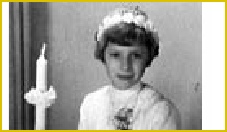
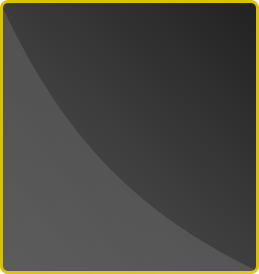

Josef Michel, Anna Michel and Miartha Michel

The Michel family with Anneliese at back left.
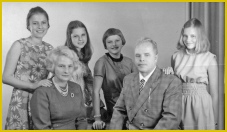
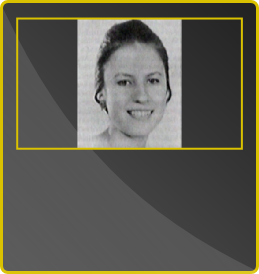
Anneliese

Anneliese
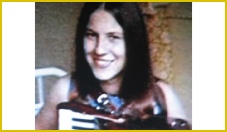

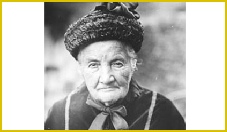
Barbara Weigand

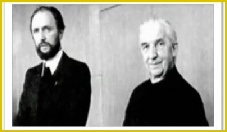
Father Ernst Alt (left) and Father Arnold Renz
| Paranormal Books |
| Apparitions |
| Cryptids |
| Demons |
| Orbs |
| Poltergiest |
| Residual Hauntings |
| Shadow People |
| West Demons |
| Ouija and Zozo |
| Exorcisms |
| Anneliese Michel |
| Ronald Hunkeler |
| Anna Ecklund |
| LaToya Ammons |
| George Lukins |
| Christian Demon texts |
| Roman Rite 1614 |
| Roman Rite 1998 |
| Eastern Demons |
| FAQ |